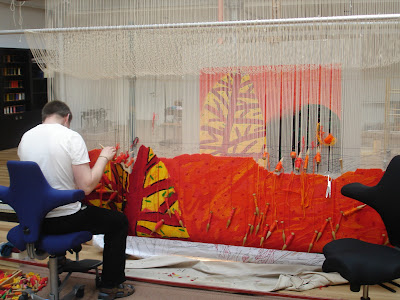I made the right decision!
Embarking on a PhD, particularly when you are just 4 years into your career, is a nerve-racking experience. Will I manage to adapt? Will my writing be good enough? Will I be able to find a job afterwards? Will I regret my decision? As a natural born worrier, all of these thoughts went through my head BUT I made the right decision.
Research introduces you to new worlds
I knew that my research on Dovecot would involve the study of designers and artists I had never looked at before. I didn't realise, however, the scope of subjects which it could lead to: social history, textile manufacture, design reform in the home, stained glass, print-making... Which leads me on to the next thing I have learnt...
 |
| Textile designed by Eduardo Paolozzi for Horrockses Fashions |
My capacity for enthusiasm is larger than I thought
Having the time and freedom to focus on nothing but research (with the occasional work diversion) has reignited my enthusiasm, whether it be for Parisian architecture, Sax Shaw's stained glass or Modernist interior design.
 |
| Sax Shaw stained glass at the National Museum of Scotland |
That I really, really like Graham Sutherland's work
The number of blog posts featuring his name is testament to this.
Writing about about handmade objects inspires you to make your own
My knitting has been encouraged by the tapestries, textiles and related objects I spend all day looking at and reading about.
Loneliness
 |
| My wee friend Yasmin with her knitted bunny |
People are generous
When not on my own, the people I have met through galleries, conferences and tapestry viewings have been generous with their knowledge and advice.
Taking a break
The most frustrating aspect of writing is that the words don't always flow when you want/need them to. This is an aspect of creativity which didn't often happen in the world of work. Taking a break from writing and studying to recharge is often a guilt-laden event but essential.
I'm sure as my review approaches I will think of many more things, and I have purposefully left out the endless list of names, dates, styles etc which I have obviously picked up along the way.














